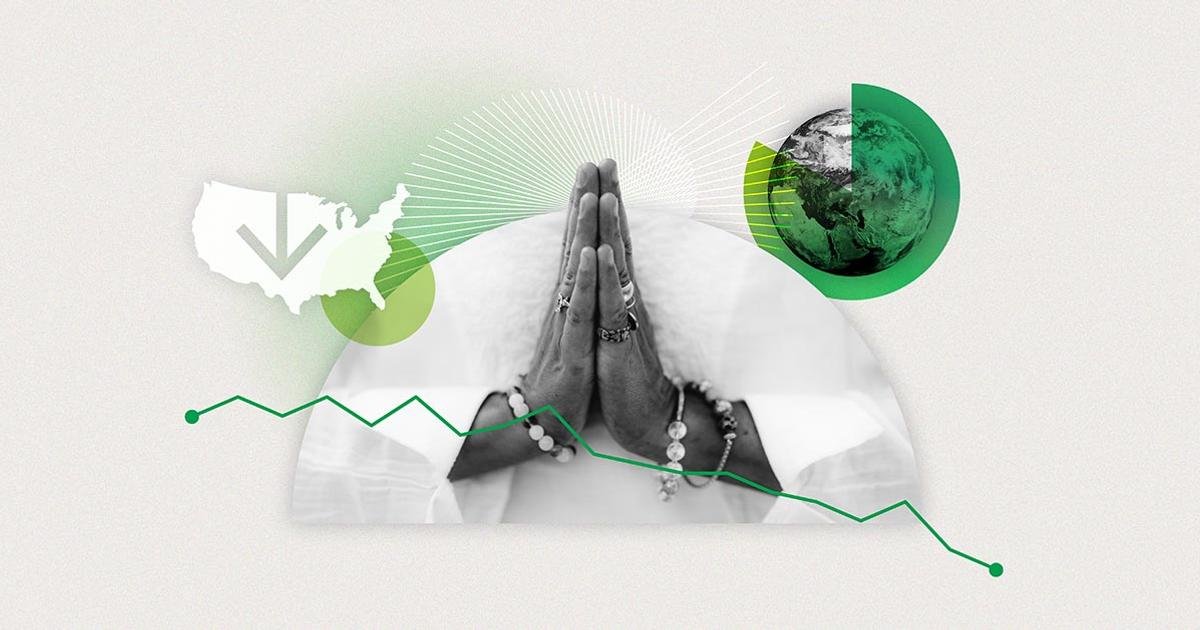Washington DC. – A 17-point decline in the percentage of American adults who say religion is an important part of their daily lives — from 66% in 2015 to 49% today — is one of the largest Gallup has recorded in any country over any 10-year period since 2007.
Nearly half of Americans now say religion is not an important part of their daily lives. They are as divided on this question today as they were last year.
Such a large decline in religiosity is rare. Since 2007, only 14 of the more than 160 countries in the world survey have seen a decline of more than 15 percent in religious importance in any 10-year period.
Only a few wealthy countries have experienced large losses in religiosity, including Greece (28 points) from 2013–2023, Italy (23 points) from 2012–2022, and Poland (22 points) from 2013–2023. Other countries, including Chile, Turkey and Portugal, have seen declines similar to the US decline.
###Embeddable###
America lags behind global average in terms of religiosity, gap with OECD narrows
As religiosity has declined in the US, the gap between the US and global averages has widened. The global mean of religiosity has remained stable for nearly two decades, averaging 81% since 2007 and reaching 83% last year, the latest full-year data available.
At the same time, the US approach is moving closer to that of other advanced economies. Across 38 OECD (Organization for Economic Co-operation and Development) countries in 2024, an average of 36% of adults said religion is important to their daily lives. The gap between the US and the average for these countries is now smaller than at any point in Gallup’s trend.
###Embeddable###
US Now occupies a unique position in global religiosity
The long-term decline in religiosity has placed America in a unique position on the global religious landscape. Most countries fall into one of four patterns: high religiosity with Christian identity; high religiosity with no other religious identity (often Muslim majority, although there are several countries in the Middle East where Gallup does not ask questions of religious identity); low religiosity with Christian identity; or low religiosity with no religious identity.
America no longer fits into either of these categories, with its Christian identity medium-high but religiosity moderate. In terms of religious identity, the percentage of Americans now identifying as Christian is similar to Western and Northern European countries such as the United Kingdom, Germany, Finland, and Denmark, which are countries with strong Protestant traditions. Yet religion continues to play a larger role in the daily lives of Americans than in the lives of people in those countries.
In contrast, the importance of religion in daily life in the US is similar to that in countries such as Argentina, Ireland, Poland, and Italy – where Catholicism is more influential – but significantly fewer Americans now identify as Christian than those populations.
###Embeddable###
This marks a change from 2008, when Gallup began tracking people’s religious identity and the role of religion in daily life more consistently in much of the world. At the time, the US aligned more closely with countries where the religion was widely practiced and the majority of adults identified as Christian.
ground level
The steady decline in American religiosity over the past decade has been evident for years. Fewer Americans identify with any religion, church attendance and membership are declining, and religion plays a less important role in people’s lives than it once did. But this analysis of World Survey data puts the decline in a broader context, showing how much has changed in the global context. Since 2007, some countries have measured large declines in religiosity.
This means that the US lags well behind the global mean of religiosity and is getting closer to the mean of other advanced economies. America is increasingly standing out as an outsider: less religious than most of the world, but still more devout than most of its economic peers.
Stay up to date with the latest information by following @Gallup on Xpress and Instagram.
For complete methodology and specific survey dates, please review Gallup’s country data set description. Learn more about how the Gallup World Poll works.
###Embeddable###
